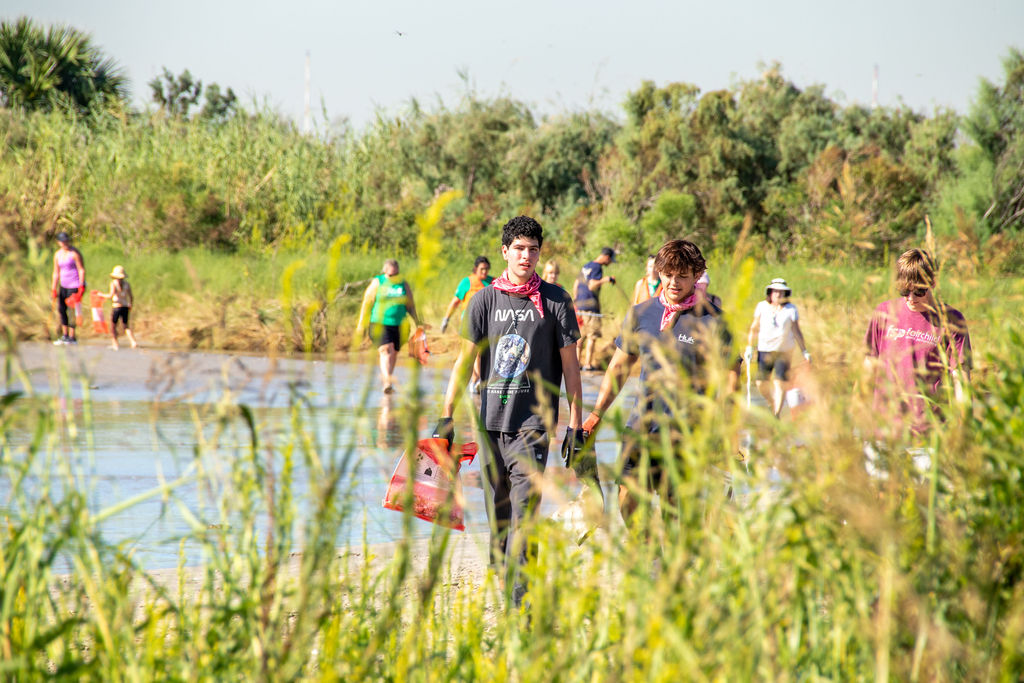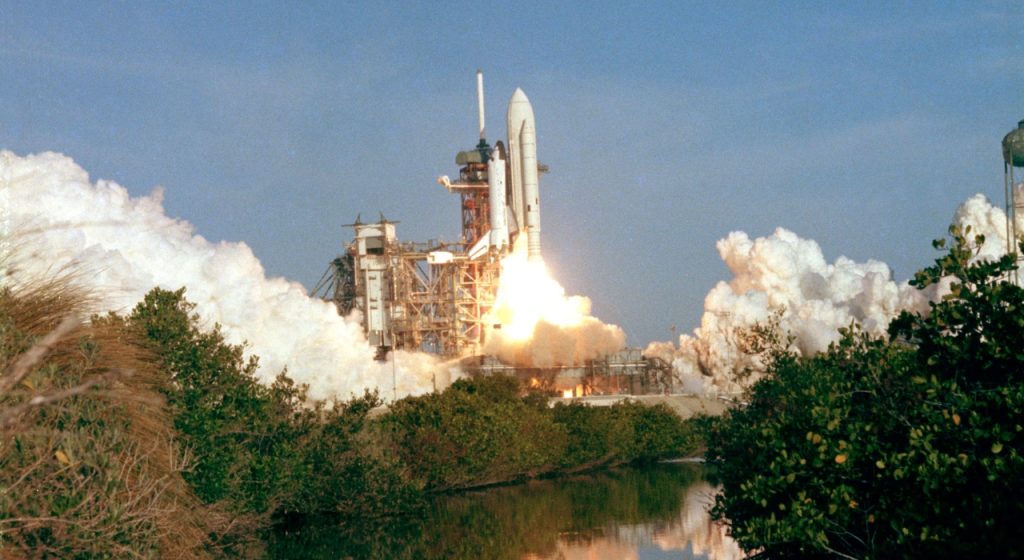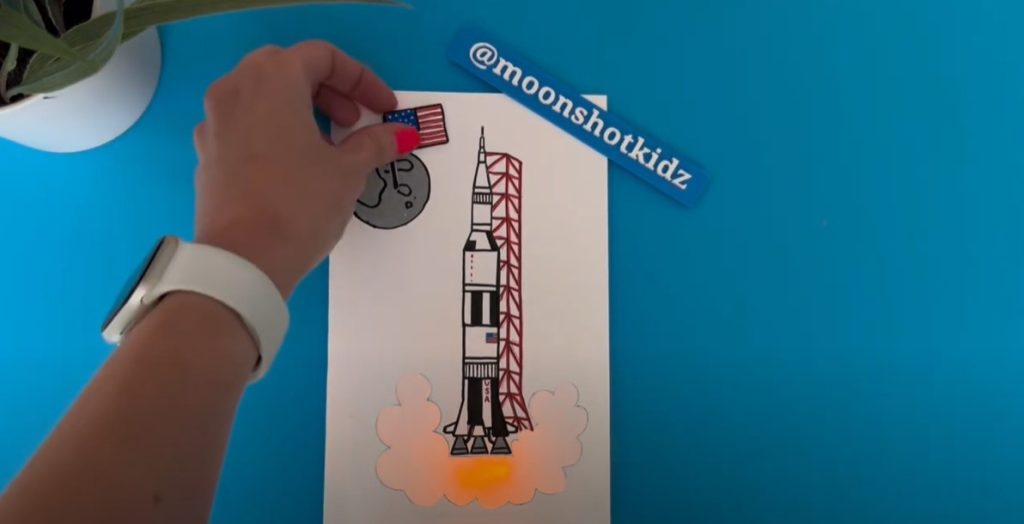On Oct. 6, Space Center Houston’s newest seasonal exhibit opens to the public. Planet Pioneers, created by Scitech of Western Perth, Australia and produced by Imagine Exhibitions, puts aspiring astronauts and space explorers to the test as they attempt to source their own food, shelter and solve problems in an unknown world.

This post launches a new feature on the blog, with guest voices adding insight into different areas of the center. This time, we have our exhibits team here to explain Planet Pioneers and why Space Center Houston put it on display.
The members of the exhibits team who joined us for this Q&A are Director of Exhibits Paul Spana and Exhibit Specialist Carmina Mortillaro.
Spana has more than 30 years of museum experience and managed the development of the multi-exhibit complex Independence Plaza, the biggest project of the nonprofit Space Center Houston since opening in 1992. Spana develops concepts and designs to create compelling in-house produced exhibits.
He is responsible for the museum’s extensive collection of space artifacts and numerous permanent and traveling hands-on exhibits telling the exciting future and remarkable past of America’s human spaceflight program.

Mortillaro has more than 25 years of museum experience. As the exhibit specialist for Space Center Houston, she curates, designs and develops exhibits that tell the story of human space exploration. Mortillaro manages graphics for the center’s exhibits, guest operations, education programs and facilities.
What is your top priority or goal when selecting the traveling exhibits?
Paul Spana: The top priority is to find an exhibit with the subject of space. In the past, there have been very few space themed exhibits. If we cannot find a space exhibit, the exhibit must be based in STEM. It must be engaging and as interactive as possible. It also must be at least 5,000-6,000 square feet in size.
Carmina Mortillaro: Once we find an exhibit that fits our themes, we look for quality and hands-on activities. We prefer exhibits that engage guests of all ages and backgrounds when sharing the story of space exploration and STEM—displays and activities that make the concepts come alive.
How is this exhibit different than other exhibits we’ve had?
PS: It’s the right size, has lots of interactives, great graphics, has a good balance of printed informational labels as well as video monitors. If I had to pick something, I’d say this is the most orange exhibit we’ve ever had. The graphics are great, but there’s a lot of orange!
CM: Planet Pioneers comes to us from Scitech/Imagine, from which we’ve rented various exhibits in the last several years. Space Center Houston is the first stop for the exhibit outside Scitech’s home country of Australia. Because we are one of the most complex stops in the rental exhibit venue circuit, Scitech actually used Space Center Houston as the target when designing the exhibit. I wonder if they saw our overall blue color palette and figured orange would fit since it’s complementary to blue.

What is your favorite activity in this exhibit?
PS: My favorite activity is “Experience G-FORCE”. The simplest interactives make the most impact especially when they are lots of fun and involve more than pushing a button! The G-Force is a hand-powered centrifuge. You and your friends sit inside a small capsule and spin around. The centrifuge interactive helps you understand how astronauts have to cope with the effects of low gravity on their bodies.
CM: I like sitting in the exploration rover because the large projection helps me imagine what it may be like exploring another planet. I hope it inspires our guests to do their own visualizing and encourages thinking and family conversations about where they would like to explore and places they would like to know more about.
What is involved in installing the exhibit?
PS: The first step is unloading the trucks. Most exhibits travel in two trucks, but can be as many as six. They park near the backdoor and crates/carts are brought in one at a time into the traveling exhibit gallery. The crates and carts can be rolled in, but usually a forklift is used to speed up the process. The exhibit owner provides one or two technicians who supervise the installation. It takes about six people plus the technicians to install an exhibit. Typically, the exhibit is installed in two weeks or ten days. Some exhibits can take up to three weeks to install.
Tools and equipment needed include hand tools, tool chest, forklift, pallet jack, dollies, pry bar lever dollies, two wheeled trucks, carts and personnel lifts. The lifts are used to hang things from the ceiling and to adjust light for the exhibit. If an exhibit has artifacts they are usually installed in their cases after most of the exhibit is set up.
CM: The necessary downside of installing a new exhibit is that the plaza has to be closed to our guests. We strive to keep the installation as short as safely possible while ensuring a quality result. This is only one of many great reasons membership is such a great value—since members come back for free they never miss anything! Often, smaller auxiliary exhibits are installed so there’s always something new.

What do you hope visitors take away from this exhibit?
PS: I hope to get people excited about the work NASA does. If they are in school, we hope they may pursue a career at NASA or in a field that supports space exploration or even science in general. For grownups, I would like for them to learn about how much space exploration contributes to their everyday lives. NASA receives less than one percent of the nation’s budget, but contributes to all aspects of our life including developing technology for cell phones, clothing, cameras, food preservation, medical devices and more.
CM: I hope visitors leave with the impression that solving the challenges of space exploration can be fun and exciting, and that diverse skills and personalities–just like theirs—are needed to succeed.






